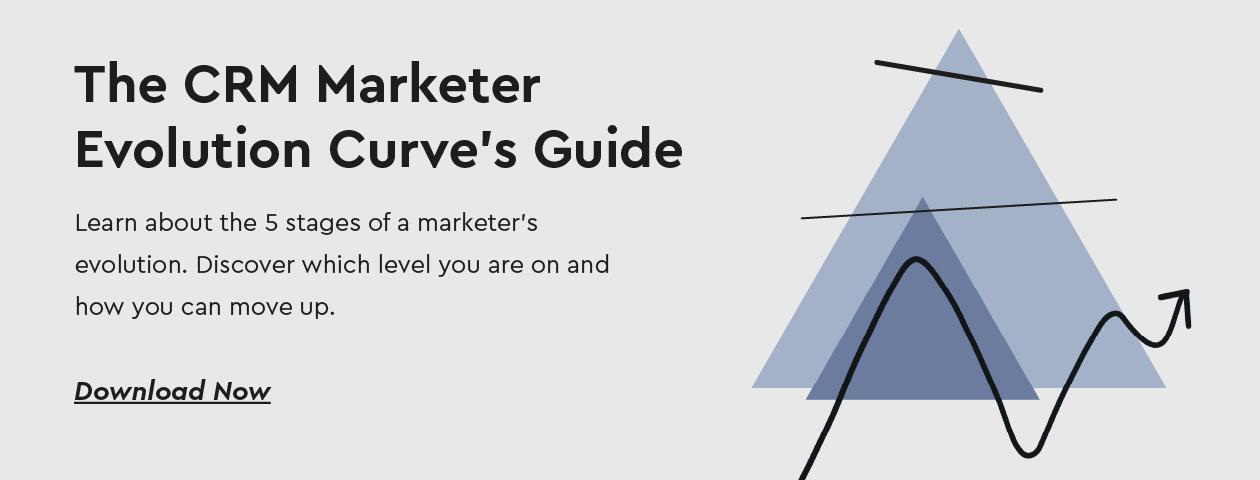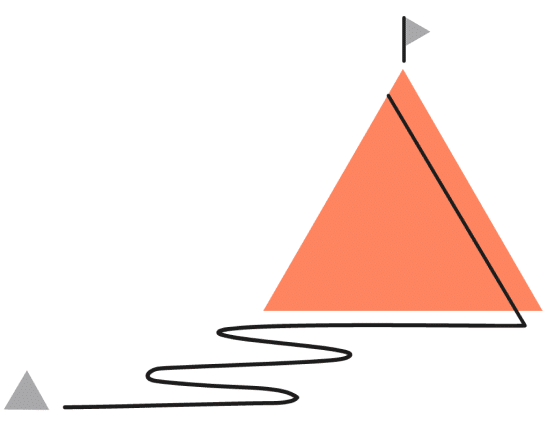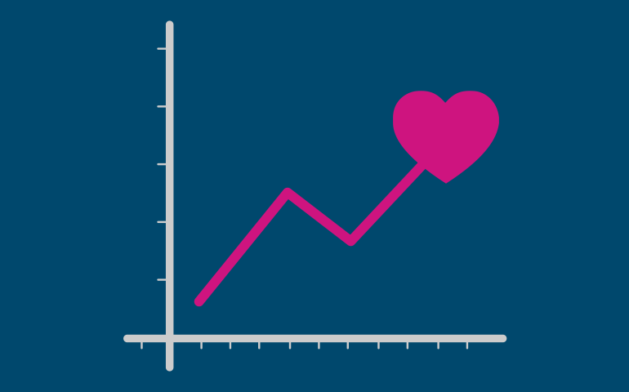What is Customer Loyalty
Customer loyalty describes the decision of a customer to continue purchasing from a particular business, due to the belief that the business offers the best combination of product, customer experience and price within its category. A high customer loyalty will prevent a customer from easily switching to a competitor based on simple factors such as better advertising or a better price. Predictive analytics combined with personalized campaign automation helps companies proactively increase customer loyalty.
Maximizing customer loyalty is an important point of focus for every business. Generating strong customer loyalty, and the higher customer retention rates it implies, is much more cost-effective than constantly relying on new acquisitions. Businesses will want to take a few steps to build loyalty and improve customer retention.
The Importance of Brand Value
Building loyalty and high retention rates must involve expressing the value of the brand to customers. This means specifying exactly what the company, products or services are providing that cannot be acquired elsewhere. Customers are less likely to turn to the competition if the benefits of the brand are clearly quantified.
The CRM Marketer evolution curve
Loyalty Programs
Businesses will want to establish a loyalty program that rewards customers who continue to make purchases. Loyalty programs are very inexpensive to implement but can dramatically increase customer lifetime value. An effective loyalty program will also improve retention by decreasing the value of purchases made through competitors.
There are various types of loyalty programs brands can incorporate, including:
- Points – customers get a defined number of points after they make a purchase from a brand. The programs are typically free to join, making it easy for customers to sign up.
- Cash Back – when customers spend a certain amount, they get coupons that can be used only at that brand. Cash back programs are like points programs, but customers get coupons instead of earning points to redeem for future purchases.
- Punch Cards – customers get a card that gets stamped each time a customer makes a purchase, and when the card is filled out, they get a reward. For example, a coffee shop could offer a punch card that you get a free cup of coffee after you buy ten cups of coffee from that shop.
- Tiers – customers reach different levels of loyalty based on how much money they spend at that store. Customers get more benefits as they become members of higher tiers. It gives customers a level of status for spending more money at a store, and it is easier to identify your most valuable customers.
- Value-Based – when customers purchase from a brand, they offer rewards like charity donations. Value-based programs build strong relationships with customers based on ethical values. Customers will likely be loyal to your brand if you have shared values.
Increasing Customer Loyalty
Customer loyalty is generated by all the activities and policies which a company employs to encourage existing customers to remain with the company. In a broad sense, the treatment experienced by customers at every stage of their relationship with the company – from pre-sales to post-sales to customer service – will determine the willingness of any given customer to maintain the business relationship. Regardless of the type of business, a happy and satisfied customer is obviously much more likely to remain a customer than one who is disappointed or frustrated with the experience.
In addition to the customer-initiated interactions with a company, marketers (or “retention experts”) within the company often execute campaigns aimed at encouraging a customer to conduct more business with the company or spend more on each transaction. Typically, these types of actions include sales, discounts, special offers, bonuses, rewards, VIP clubs and membership/loyalty programs.
In order to be effective, active attempts to increase customer loyalty need to approach each customer within the context of their unique behaviors, needs and preferences. Unfortunately, many marketers essentially assume that all customers (or large subsets of their customer base) will respond similarly to any given offer. Not only does this approach reduce the effectiveness of the customer loyalty enhancement efforts, but it can actually lose the company money by, for example, providing free bonuses to loyal customers who would have spent more anyway.
Read More: 7 Best Practices for Creating Customer Loyalty
Finding the Right Customer Loyalty Strategy
It’s probably clear by now that every brand needs a proper customer loyalty strategy to be successful, as it is essential to your company’s long-term profitability and revenue. The good news is that using a wide range of CRM marketing tools and strategies makes it easier to implement the right customer loyalty strategy for your brand, thereby facilitating a positive customer experience in the long run.
Your brand can implement a proper customer loyalty strategy by defining an objective, finding a message, offering an incentive, and automating the entire process. In addition, when segmenting clients into hundreds of thousands of microsegments based on their membership patterns, you’ll gain personalized, multichannel strategies that fuel your customer loyalty.
For example, Optimove’s partner Yotpo, an eCommerce marketing platform, created a point system to incentivize customers to accumulate points and redeem them to make a purchase. This customer loyalty strategy gives marketers the opportunity to personalize emails for each customer by displaying their current point range in real time and show how far away they are from purchasing an item from their favorite product category.
So, it is clear that the right customer loyalty strategy paired with the right optimization tools helps build stronger customer relationships. Finding a method to master it will allow your brand to perform better. Now it is time to get a bit more technical.

Using Predictive Analytics to Increase Customer Loyalty
Marketing efforts are always a numbers game: how many customers will respond to a particular marketing action, how much impact the marketing action will have on those customers who do respond and what ROI will result. Whatever the goal of a marketing action – convert free users to become paying customers, increase customer spend, bring back customers from churn, etc. – marketers constantly seek to utilize the marketing actions which will have the greatest impact on their KPIs.
By intelligently segmenting customers into small segments predicted to behave similarly in response to particular actions, the marketer will almost always realize more successful marketing campaigns, with immediate improvements in sales and retention – and, of course, customer loyalty. As a side benefit, targeting only the most relevant customers with each action can yield lower marketing costs.
The challenge in this approach is that it requires a very high standard of technical expertise among marketers and analysts, along with large amounts of time that most marketers simply don’t have. However, there is a way for marketers (even non-technical marketing people) to access the sophisticated tools and automation technology which can achieve reliable and accurate segmentation and predictive analytics.
Improve Customer Loyalty – Automatically
Automating a marketing machine aimed at increasing customer loyalty requires sophisticated software. Such an application will drive the entire cycle of planning, running, measuring and managing marketing actions. The goal is to maximize customer retention, customer loyalty, and customer lifetime value by scientifically predicting the most effective marketing action to run for every customer, every time.
The first phase performed by the customer loyalty software involves slicing and dicing all available customer behavior, transaction and demographics data in order to achieve high-resolution customer micro-segmentation. Then, the marketer uses the software to plan which marketing actions to run on each “target group” (lists of periodic customers discovered by the software, such as newbies, high-spenders, about to churn, churn, back from churn) – and possibly to automatically execute the actions as well.
The customer loyalty software tracks the impact of each action on each micro-segment in order to learn which actions are most effective for each micro-segment. In the immediate term, the marketer will have total clarity into the effectiveness of each marketing action. Over time, the software will be able to recommend which marketing action will be most effective for every individual customer.
The CRM Marketer Evolution Curve’s Guide
Learn about the 5 stages of a marketer’s evolution. Discover which level you are on and how you can move up.
The Technology Enabler
Achieving accurate predictions of which marketing actions will be most successful for each customer is not a simple matter. In fact, successful automatic customer loyalty software needs to seamlessly combine four disparate technological capabilities:
- Dynamic and ongoing segmentation of customers into small groups (micro-segments) who will likely behave similarly in response to marketing actions
- Behavior modeling to predict how each micro-segment of customers will respond to each available marketing action
- Customer lifetime value forecasting to predict the long-term impact of marketing actions on customers (not just the immediate-term results) at every point in the customer lifecycle
- A self-learning, closed-loop action optimization methodology which can test, track and optimize how marketing actions affect micro-segments of customers
Given the complexity of performing these calculations, even when all the required source data is readily available, it is not surprising that automated customer retention is not widely available. However, by implementing such a system, marketing and retention teams will be able to reduce the guesswork involved in their efforts – and dramatically improve their performance.
Pursuing Lost Customers
It is important to take every step possible to reclaim lost customers. Customers who have not made a purchase in a few months can become the target segment for a promotion designed to draw people back. Customers who abandon an online shopping cart should receive reminders that the items are still available. This will directly increase retention.
Frequently Asked Questions
What is an example of a content recommendation engine?
One of the most popular examples of a content recommendation engine is Netflix.
Netflix uses multiple filtering methods and machine learning algorithms to make recommendations to users. These recommendations suggest TV shows or movies based on user‘’s watch history or engagement with specific genres. This streaming service aims to provide personalized content that enhances customer experience and differentiates them from competitors.
What are the three types of machine learning models used by recommendation engines?
The three types of recommendation engines are collaborative filtering, content-based filtering, and hybrid filtering.
*Collaborative filtering: Makes individual recommendations based on similar users’ preferences and behavioral data.
*Content-based filtering: Matches features of specific items to certain user preferences.
*Hybrid filtering: Combines collaborative and content-based filtering for improved recommendations.

Optimove’s Customer Loyalty Software
Optimove combines predictive customer modeling and advanced multi-channel campaign automation technologies to help businesses maximize customer loyalty and retention.
Optimove is a Web-based (SaaS) CRM marketing solution dedicated specifically to the mission of maximizing the personalization and effectiveness of every customer marketing campaign. The product’s ground-breaking technology is the first to integrate all the necessary auto-segmentation, statistical and predictive models required to accurately calculate and predict customer behavior and customer lifetime value, along with the application framework to select target groups, interface with campaign management systems, measure marketing action results and predict the most effective future actions for each customer.
Contact us today – or request a Web demo – to learn how you can use Optimove to convert more customers, increase the spend of existing customers and reduce customer churn.
Get a personalized tour of Optimove
Let us show you how to go from tens to hundreds of segments

